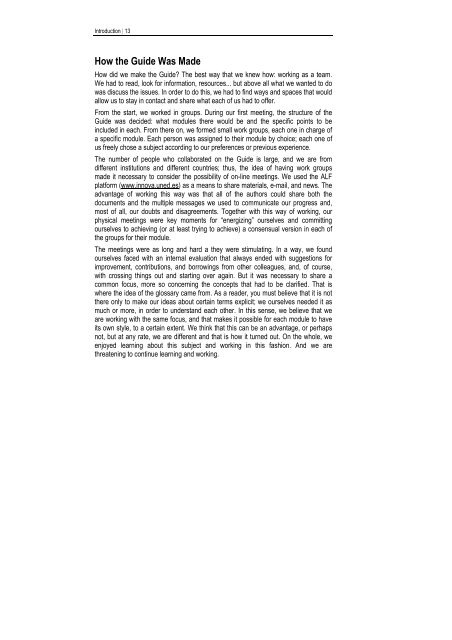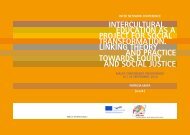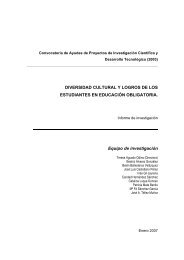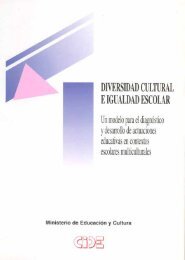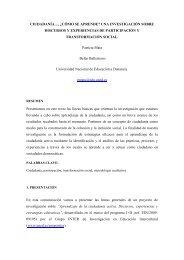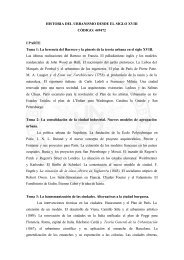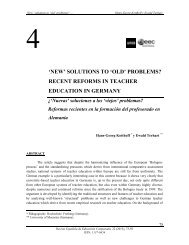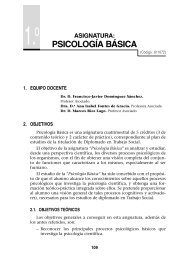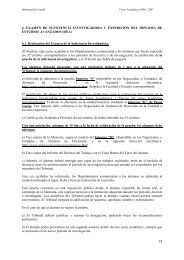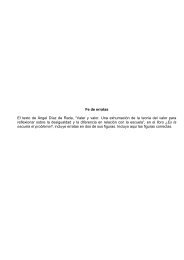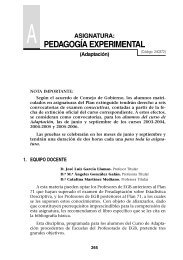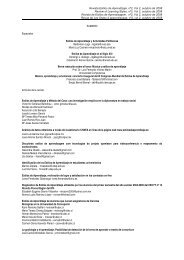Racism: What It Is and How to Deal with It - Uned
Racism: What It Is and How to Deal with It - Uned
Racism: What It Is and How to Deal with It - Uned
You also want an ePaper? Increase the reach of your titles
YUMPU automatically turns print PDFs into web optimized ePapers that Google loves.
Introduction | 13<br />
<strong>How</strong> the Guide Was Made<br />
<strong>How</strong> did we make the Guide? The best way that we knew how: working as a team.<br />
We had <strong>to</strong> read, look for information, resources... but above all what we wanted <strong>to</strong> do<br />
was discuss the issues. In order <strong>to</strong> do this, we had <strong>to</strong> find ways <strong>and</strong> spaces that would<br />
allow us <strong>to</strong> stay in contact <strong>and</strong> share what each of us had <strong>to</strong> offer.<br />
From the start, we worked in groups. During our first meeting, the structure of the<br />
Guide was decided: what modules there would be <strong>and</strong> the specific points <strong>to</strong> be<br />
included in each. From there on, we formed small work groups, each one in charge of<br />
a specific module. Each person was assigned <strong>to</strong> their module by choice; each one of<br />
us freely chose a subject according <strong>to</strong> our preferences or previous experience.<br />
The number of people who collaborated on the Guide is large, <strong>and</strong> we are from<br />
different institutions <strong>and</strong> different countries; thus, the idea of having work groups<br />
made it necessary <strong>to</strong> consider the possibility of on-line meetings. We used the ALF<br />
platform (www.innova.uned.es) as a means <strong>to</strong> share materials, e-mail, <strong>and</strong> news. The<br />
advantage of working this way was that all of the authors could share both the<br />
documents <strong>and</strong> the multiple messages we used <strong>to</strong> communicate our progress <strong>and</strong>,<br />
most of all, our doubts <strong>and</strong> disagreements. Together <strong>with</strong> this way of working, our<br />
physical meetings were key moments for “energizing” ourselves <strong>and</strong> committing<br />
ourselves <strong>to</strong> achieving (or at least trying <strong>to</strong> achieve) a consensual version in each of<br />
the groups for their module.<br />
The meetings were as long <strong>and</strong> hard a they were stimulating. In a way, we found<br />
ourselves faced <strong>with</strong> an internal evaluation that always ended <strong>with</strong> suggestions for<br />
improvement, contributions, <strong>and</strong> borrowings from other colleagues, <strong>and</strong>, of course,<br />
<strong>with</strong> crossing things out <strong>and</strong> starting over again. But it was necessary <strong>to</strong> share a<br />
common focus, more so concerning the concepts that had <strong>to</strong> be clarified. That is<br />
where the idea of the glossary came from. As a reader, you must believe that it is not<br />
there only <strong>to</strong> make our ideas about certain terms explicit; we ourselves needed it as<br />
much or more, in order <strong>to</strong> underst<strong>and</strong> each other. In this sense, we believe that we<br />
are working <strong>with</strong> the same focus, <strong>and</strong> that makes it possible for each module <strong>to</strong> have<br />
its own style, <strong>to</strong> a certain extent. We think that this can be an advantage, or perhaps<br />
not, but at any rate, we are different <strong>and</strong> that is how it turned out. On the whole, we<br />
enjoyed learning about this subject <strong>and</strong> working in this fashion. And we are<br />
threatening <strong>to</strong> continue learning <strong>and</strong> working.


